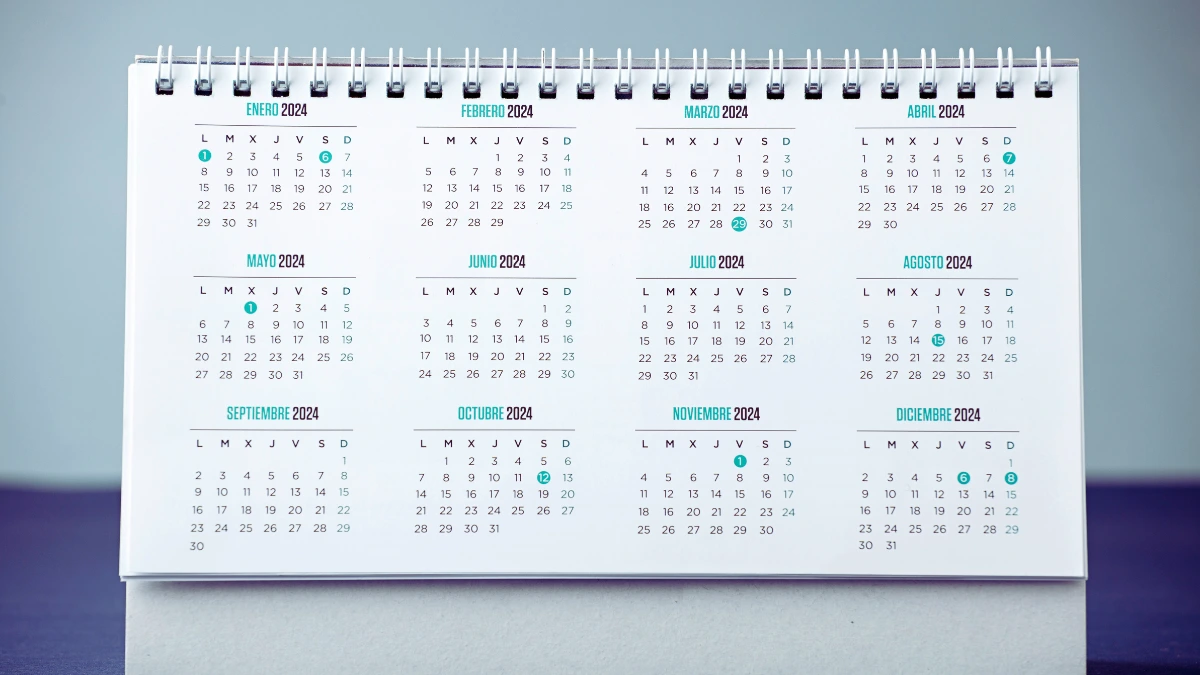You got that promotion. Your salary doubled. And somehow you’re still broke.
Sound familiar? You’re not alone. Most people earn more and spend more. They never get ahead. This is known as lifestyle inflation, and it’s costing you the opportunity to build real wealth.
Here’s what happens: You make $50,000 and live paycheck to paycheck. You get a raise to $75,000. Instead of saving that extra $25,000, you upgrade your apartment.
You buy a nicer car. You eat out more. Soon, you’ll be living paycheck to paycheck again.
In this article, you’ll learn why earning more doesn’t make you richer. You’ll get seven simple strategies to avoid lifestyle inflation. And you’ll discover how to build wealth while still enjoying your higher income.
What Is Lifestyle Inflation (And Why It’s Stealing Your Wealth)

Lifestyle inflation happens when your spending grows with your income. You earn more, so you spend more. Your lifestyle gets fancier, but your bank account stays empty.
Here’s a real example: Sarah makes $60,000. She gets promoted and now makes $90,000. That’s $30,000 more per year.
But Sarah doesn’t save that money. Instead, she moves to a $500/month more expensive apartment. She buys a $400/month car payment. She spends $200 more on restaurants and clothes. Her lifestyle inflation ate up all her raise.
The numbers are scary. People who make $75,000 save about the same percentage as people who make $35,000. Both groups save around 3-5% of their income. More money doesn’t equal more savings.
Why does this happen? It’s psychology. When you earn more, you feel richer. You think you deserve nice things. Your friends might have nicer stuff. So you upgrade without thinking.
But here’s the truth: Rich people don’t spend everything they earn. They keep their lifestyle costs low and invest the difference. That’s how they build wealth.
The lifestyle inflation trap is sneaky. It happens slowly. You don’t notice each small upgrade. A $10 subscription here. A $50 dinner there. These add up fast. Before you know it, your new higher income is gone.
Why the 50/30/20 Rule Fails When You Earn More

You’ve heard this advice: Spend 50% on needs, 30% on wants, 20% on savings. This sounds smart. But it’s terrible for people who get raises.
Here’s why: If you make $50,000, you spend $15,000 on wants. If you make $100,000, you now spend $30,000 on wants. Your “want” spending doubled just because you earned more. That’s lifestyle inflation in disguise.
Smart people don’t budget by percentages. They budget by dollar amounts. They decide how much lifestyle spending is enough. Then they keep it there no matter how much they earn.
Let’s say you decide $2,000 per month is enough for fun money. When you make $60,000, that’s 40% of your income. When you make $120,000, it’s only 20%. The extra money goes to savings and investing, not lifestyle upgrades.
This is the secret rich people know: Set a ceiling on lifestyle spending. Keep it there. Let everything else go to wealth building.
If you want a complete breakdown of the new budgeting system that works in today’s economy, check out “The 50/30/20 Rule is Dead: Here’s the New Budgeting Ratio for a High-Inflation World,” where I show you the exact ratios successful people use instead.
Strategy 1: Pay Yourself First (The Right Way)

Most people save what’s left after spending. Rich people spend what’s left after saving. Big difference.
Here’s how to do it right: Every time you get paid, money goes to savings first. Before you pay bills. Before you buy anything. This is called paying yourself first.
But here’s the key: Save dollar amounts, not percentages. If you make $70,000, maybe you save $1,000 per month. When you get a raise to $85,000, you don’t save $1,214 (same percentage). You save $2,000. You doubled your savings, not your lifestyle.
Set up automatic transfers. On payday, $2,000 goes to savings. You never see it. You can’t spend it. This makes saving invisible and automatic.
Here’s what this looks like:
- Emergency fund: $500/month until you have 6 months of expenses
- Retirement account: $1,000/month
- Investment account: $500/month
When you get a raise, increase these amounts. Don’t increase your spending budget.
Sarah from our earlier example should have done this. Her $30,000 raise should have meant $2,500 more in savings each month. Instead, it went to lifestyle inflation.
Open separate savings accounts for each goal. Set up automatic transfers. Make it so you have to work hard to spend this money, not save it.
Strategy 2: Set a Lifestyle Ceiling That Never Moves

Pick a number. This is the most you’ll ever spend on lifestyle in one month. No matter how much you earn.
What counts as lifestyle? Anything beyond basic needs:
- Eating out
- Entertainment
- Clothes shopping
- Hobbies
- Travel
- Nice-to-have subscriptions
What doesn’t count?
- Rent/mortgage payment
- Groceries
- Insurance
- Basic phone plan
- Transportation to work
Let’s say you pick $3,000 per month as your lifestyle ceiling. When you make $80,000, this feels tight. When you make $150,000, this feels easy. But you never raise the ceiling.
This forces you to make choices. You can’t have everything. You pick what matters most. Maybe you love traveling but don’t care about fancy clothes. Or you love nice dinners but drive an old car.
The ceiling creates artificial scarcity. Even when you have more money, you act like you don’t. This is how you avoid lifestyle inflation.
Track your lifestyle spending each month. When you hit your ceiling, you’re done. No more restaurants. No more shopping. Wait until next month.
Strategy 3: Wait 12 Months Before Major Upgrades

Got a raise? Great. Now wait a full year before upgrading anything big.
This includes:
- Moving to a more expensive place
- Buying a newer car
- Taking on new monthly payments
- Expensive hobbies or equipment
Why wait? Because the urge to upgrade is strongest right after you get more money. You feel rich. You want to celebrate. But this feeling fades.
After 12 months, you can think clearly. You’ll know if you need the upgrade or if it was just excitement talking.
What do you do with the extra money this year? Save and invest it. See how it feels to have more money in the bank instead of more stuff in your life.
Many people discover that watching their bank account grow beats any shopping high. They choose to keep their lifestyle the same and build wealth instead.
This doesn’t mean you can’t enjoy your raise at all. You can increase small lifestyle spending. Maybe eat out once more per month. Or buy nicer coffee. But no big changes for a full year.
If, after 12 months, you still want the upgrade, go for it. But you’ll be surprised how often the answer is no.
Strategy 4: Apply Raises to Wealth Building, Not Lifestyle

Here’s a simple rule: Every dollar raised goes to wealth building. Zero goes to lifestyle.
The “Save More Tomorrow™” program by Richard Thaler and Shlomo Benartzi (2004) encourages individuals to commit in advance to allocating a portion of their future salary raises towards savings.
Results showed participants increased their savings rates from 3.5% to 13.6% over 40 months, demonstrating that directing raises to savings significantly boosts wealth accumulation.
Let’s say you make $65,000 and save $500 per month. You get a $10,000 raise. Your new salary is $75,000. That’s about $650 more per month after taxes.
What do you do? Save $1,150 per month now. Your lifestyle stays the same. Your wealth building more than doubles.
This rule is powerful because it’s simple. No complex math. No tough decisions. Raise money = save money. Done.
Set up your wealth-building accounts to automatically increase when you get a raise:
- 401(k): Increase contribution by 3-5%
- Investment account: Add $400/month
- Emergency fund: Add $250/month
This happens automatically. You don’t have to choose savings over spending. The money never enters your lifestyle budget.
Your lifestyle was fine before the raise. It’ll be fine after. But your future wealth just got a huge boost.
Strategy 5: Upgrade Smart, Not Often

You don’t have to live like a monk forever. Smart upgrades are okay. But they need rules.
Good upgrades:
- Save you time
- Improve your health
- Help you earn more money
- Replace broken things with better versions
Bad upgrades:
- Show off to others
- Are impulse purchases
- Create new monthly payments
- Are they just newer versions of working things?
Before any upgrade, ask these questions:
- Will this make my life actually better in 6 months?
- Am I buying this because I earned more money?
- What am I giving up to afford this?
- Can I afford this AND still hit my savings goals?
If you can’t give good answers, skip the upgrade.
Time your upgrades with wealth milestones, not income milestones. Maybe you upgrade when you hit $50,000 in savings. Or when your investment account reaches six figures. This connects upgrades to wealth building, not income increases.
Strategy 6: Track Net Worth, Not Income

Your income doesn’t make you rich. Your net worth does.
Net worth = Everything you own – Everything you owe
This includes:
- Bank accounts
- Investment accounts
- Retirement accounts
- Your home value
- Minus all debts
Track this number every month. Make it go up. This is your real financial score.
Many high earners have terrible net worth. They make $150,000 but owe $200,000 in student loans and credit cards. Their net worth is negative.
Some lower earners have great net worth. They make $70,000 but have saved for years. They have $300,000 in investments and no debt.
Who’s richer? The saver, not the high earner.
Use apps like Personal Capital or Mint to track net worth automatically. Or make a simple spreadsheet. Update it monthly.
Set net worth goals:
- First goal: Get to zero (no debt)
- Next goal: Save one year of income
- Big goal: Build 10 times your income
Don’t upgrade your lifestyle until you hit wealth milestones. This keeps you focused on building assets, not buying stuff.
Strategy 7: Build Multiple Income Streams Before Lifestyle Expansion

Don’t put all your money hopes on one job. Build a backup income before you increase spending.
Side income ideas for professionals:
- Consulting in your field
- Online courses or coaching
- Rental property income
- Investment dividends
- Freelance work
Start small. Even $500 per month extra makes a difference. This money can fund lifestyle upgrades without touching your main income.
The rule: Don’t increase lifestyle spending until your side income can cover it. Want a $300/month car payment? Build $300/month in side income first.
This protects you if you lose your main job. Your lifestyle is covered by side income. Your main income can go mostly to wealth building.
Side income also grows faster than salary income. Your boss gives 3% raises. Your side business can double in a year.
Focus on building assets that create income. Don’t trade more time for more money. Build things that pay you even when you sleep.
Common Lifestyle Inflation Traps (And How to Avoid Them)

These spending categories destroy more wealth than anything else. Know the traps so you can avoid them.
Housing (The Biggest Trap)
This is where most people blow their raises. They get more money and immediately want a better place.
Don’t do this. Housing should stay under 25% of your income. When you earn more, this percentage should go down, not stay the same.
If you make $60,000, spend max $1,250 on housing. If you get a raise to $90,000, don’t increase it to $1,875. Keep it at $1,250 or less.
Car Payments
Every car commercial targets people who have just gotten raises. “You deserve this.” “Treat yourself.”
Here’s the truth: Cars are depreciating assets. They go down in value. Never finance a car if you can help it. Buy used with cash.
If you must finance, keep the payment under $300. Don’t upgrade just because you can afford more payments.
Eating Out
This creeps up slowly. You earn more, so you order delivery more. You try fancier restaurants. You buy lunch instead of packing it.
Eating out can easily cost $500-800 per month. That’s $6,000-10,000 per year. Money that could be invested instead.
Set a dining out budget. Stick to it. When it’s gone, you cook at home.
Subscriptions
Netflix becomes Netflix + Hulu + Disney+ + Spotify + gym + meal kit + software subscriptions.
Each one is small. Together they’re huge. Audit your subscriptions every three months. Cancel what you don’t use weekly.
Social Pressure
Your friends upgrade their lives. You feel left out. You upgrade too. This is keeping up with the Joneses on steroids.
Remember: You can’t see their bank accounts. That friend with the nice car might be drowning in debt. Focus on your wealth goals, not their lifestyle.
How to Think Like a Wealth Builder, Not a High Earner

Rich people think differently about money. They don’t think “How much can I afford?” They think, “How will this help me build wealth?”
Every purchase is an investment decision. Money spent on lifestyle can’t be invested. Money invested can compound and grow.
$500 per month in lifestyle spending = $500 per month forever.
$500 per month invested at 7% = $87,000 in 10 years.
Which do you want?
Rich people delay gratification. They live below their means. They invest the difference. This isn’t about being cheap. It’s about being smart.
They also think long-term. Poor people think about this month. Middle-class people think about this year. Rich people think about the next 10-20 years.
What will make you happier in 20 years? Having nice stuff now, or having financial freedom later?
Your Next Steps to Avoid Lifestyle Inflation

You can’t change your past spending. But you can change what happens next.
Pick one strategy from this article. Start today:
- Set up automatic savings. Transfer money on payday before you can spend it.
- Calculate your lifestyle ceiling. Add up all non-essential spending. Set that as your max.
- Wait 12 months. If you just got a raise, commit to no major upgrades for a year.
- Track your net worth. Set up an account with Personal Capital or Mint.
The goal isn’t to live like you’re poor when you’re not. The goal is to build wealth while enjoying life.
Most people avoid lifestyle inflation by accident. They get busy with work and forget to upgrade their lifestyle. Then they wake up 10 years later with hundreds of thousands in savings.
You can do this on purpose. Keep your lifestyle steady. Let your wealth grow. In 10-15 years, you’ll have enough money to buy whatever lifestyle you want.
Or you might find that having money feels better than spending money. Many wealthy people choose simple lifestyles because they value freedom more than stuff.
The choice is yours. But the time to start is now. Every month you wait is a month of wealth building you lose forever.
Your future self will thank you for avoiding lifestyle inflation today.
